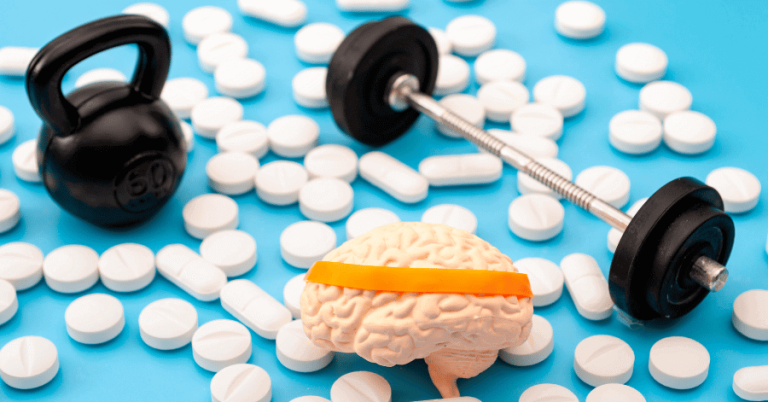Our site features affiliate links. If you buy through them, we earn a commission at no extra cost to you. Thanks for your support!
In a time when non-communicable diseases and neurological disorders are on the rise, and with growing concerns about the pharmaceutical industry’s practices over the past few decades, more people are beginning to question whether what we’re told is “safe and effective” truly is.
In much of the Western world, we have been told that tap water is safe to drink and that the disinfectants they use, from chlorine to fluoride, are safe in the small concentrations found in tap water.
Research over the past few years has suggested that it might not be quite that simple and that what we held true in the past may no longer be so. In fact, standards for judging whether or not a chemical is harmful at certain levels have not been updated since 1974.
This article aims to update you on the safety of tap water by exploring the latest scientific research on its contents and the levels at which it becomes harmful. We’ll examine the impact of these contaminants and disinfectant byproducts, from effects on male reproductive health to immune system disruptions caused by “forever chemicals.” Additionally, we’ll guide you on how to assess your water source and offer healthy alternatives that can help reduce exposure to these contaminants.
Is Tap Water Bad For You?
Even with dozens of high-quality studies evaluating the possible dangers of water contaminants, there is no one-size-fits-all answer to this complicated question.
Firstly, water quality varies largely depending on region. The top ten cleanest sources of tap water are all within European countries, including Austria, Finland, Greece, and Iceland, whereas the worst are all located in Africa.
Secondly, while water is tested at the source, the age and quality of the pipes used to transport water are highly variable. Newer areas likely have newer, safer pipes, but older areas likely have corroding and dirty pipes
While a good rule of thumb, there are many exceptions – some older pipes are still very clean, whereas newer pipes have been shown to contain sealants and seals that leak chemicals slowly.
Then there are the disinfectant byproducts and contaminants in the water itself. We have been told that fluoride is safe to drink, so long as it is below the minimum threshold, which the World Health Organization (WHO) deems to be between 1 and 1.5 milligrams per liter. Like many of the guidelines set by the WHO, however, research is finding that this limit may be too high. In fact, some studies, as we will see, show that there is no safe limit.
The effects of excessively high fluoride levels are well known: neurodevelopmental effects, endocrine disruption, kidney damage, and some cancers are all well-documented.
So the question is not whether these compounds are dangerous, as we know they are, it’s whether these compounds are in our drinking water in sufficient quantities to negatively impact our health.

Tap Water and Reproductive Health
Although a possible link between water contaminants and reproductive health (male and female) has been suspected by a few for quite some time, we are fortunate that a thorough 2020 review analyzed water from different sources throughout the world, focusing on the amount of disinfection byproducts (DBPs) contained within the sampled water.
DBPs are the byproducts of disinfectants used to treat our drinking water, namely chlorine, chloramines, and ozone.
While I do believe that governments put these disinfectants with the genuine intention of safely treating the water, in doing so, they often introduce byproducts that are not good for us.
The study made it clear that DBPs can cause endocrine disruption (when chemicals interfere with the normal functioning of the hormonal system), potentially leading to adverse health effects such as reproductive, developmental, and metabolic issues.
In terms of reproduction, DBPs were found to disrupt ovarian function, spermatogenesis (the process by which sperm cells are produced and developed in the testes), and fertility outcomes, even at low DBP concentrations found in drinking water.
The review highlights how these chemicals have been shown to cause adverse reproductive outcomes, including reduced fertility, developmental abnormalities, and hormonal disruptions.
For instance, disinfection byproducts have been linked to developmental toxicity and pregnancy loss, fluorinated compounds have been associated with reduced sperm viability and endocrine disruption, and BPA exposure (an industrial chemical used in the production of plastics) has been connected to diminished sperm quality and ovarian function.
Like most DBPs, disinfectants, and contaminants, you can find the exact quantities tested in your water source by typing your ZIP code into Google and asking for a water analysis. While it can sometimes be tricky to locate, they are all available online by law.
Interestingly, endocrine disruption isn’t just limited to what’s in our water — it also comes from what washes into it. Everyday products like sunscreen can leach UV-filtering chemicals such as oxybenzone and octinoxate into rivers and groundwater, where they persist and accumulate. These same compounds have been found in human blood, breast milk, and even drinking water. You can read more about that in my article on whether sunscreen is truly safe.
Fluoride
Fluoride has been added to drinking water since the mid-1940s after early research suggested it helps prevent tooth decay. This process, known as water fluoridation, has been found to reduce the occurrence of cavities in both children and adults.
In the past few decades, however, there has been an increasing body of data arguing that fluoride has the potential to cause more harm than good.
Fluoride is of particular concern for the thyroid hormone system of the body, which has lots of different roles in the brain and body and is important for most bodily functions, from metabolism to energy levels.
When the thyroid is disrupted it can lead to depression. Hypothyroidism (underactive thyroid), for example, is associated with symptoms such as fatigue, low energy, and mood changes, which can mimic or worsen depression.
The thyroid system also relates to everything from sleep to reproduction, bone, and tissue health.
A 2018 study demonstrated that fluoride negatively impacts thyroid stimulating hormone and T3 (one of the two main hormones produced by the thyroid gland) levels, even in the standard concentrations of 0.5 mg per liter found in tap water.
This effect was observed both in individuals with hypothyroidism and in those without thyroid disease, suggesting that fluoride may contribute to thyroid dysfunction even at concentrations considered safe by current standards.
Unfortunately, the effects of fluoride exposure get worse and far more sinister.
The National Toxicology Program (NTP) conducted a comprehensive six-year review on fluoride’s impact on the developing brain, and the results are eye-opening. Despite initial attempts by the U.S. Department of Health and Human Services (HHS) leadership to block its release, the review was made public following a court order.
The NTP’s findings reveal a troubling pattern: 52 out of 55 studies show that higher fluoride exposure is linked to lower IQ in children. Even worse, no safe threshold was identified. Yet, many of the institutions responsible for fluoride legislation make no reference to this landmark study and continue as if nothing happened.
PFAS – Forever Chemicals
PFAS, or per- and poly-fluoroalkyl substances, are a group of chemicals that have gained notoriety for their persistence in the environment and potential to harm human health.
Often found in everyday products, these “forever chemicals” do not easily break down, leading to their accumulation in the human body over time. This is particularly concerning given the mounting evidence linking PFAS exposure to a range of health problems.
Research has shown that exposure to PFAS can lead to developmental problems in children, including delayed growth and learning difficulties in children (like fluoride). PFAS are also associated with metabolic disorders such as obesity and diabetes, immune system disruptions that can reduce the effectiveness of vaccines and increase susceptibility to infections, and an increased risk of certain cancers, particularly kidney and testicular cancers.
A recent study delves into the prevalence and risks associated with PFAS in drinking water across the United States, shedding light on just how widespread this issue is. Researchers analyzed tap water from 716 locations, including both private wells and public water supplies, collected between 2016 and 2021.
The findings are alarming: PFAS were detected in about 45% of the drinking water samples, with PFBS, PFHxS, and PFOA being the most common culprits, showing up in roughly 15% of samples.
What’s more, the study revealed no significant difference in PFAS levels between private wells and public water supplies, indicating that these contaminants are pervasive regardless of water source. Detection rates were notably higher in urban areas and regions with a history of PFAS contamination, suggesting that industrial activity and wastewater management play significant roles in determining contamination levels.
One of the most troubling aspects of PFAS is their extraordinary resistance to breaking down, earning them the nickname “forever chemicals.” In the environment, PFAS can persist for decades, and in some cases, they may never fully degrade. This environmental persistence means that once PFAS contaminate water sources, they can remain there indefinitely, continually posing a risk to human health through ongoing exposure.
Is Filtered Water The Answer?
While the above shows that most tap water, if not all, contains things that are bad for the biology of our cells, there is some good news in that it is possible to fairly easily adjust our tap water to make it perfectly fine to drink.
Ultimately, every mechanism to clean water of these disinfectants, DBPs, and contaminants will require some form of filtering to remove. This can range from the simple and expensive carbon filters from Walmart for less than $50, to expensive whole-house reverse osmosis filters costing upwards of $20,000.
Even if your water source is excellent, ideally, everyone should still be filtering their drinking water. Even if you have no health issues, exercise, eat well, and sleep well at night, perhaps you don’t need to filter your water. But I would argue, why wouldn’t you?
For others who already suffer health complications, filtering is almost essential, as it is pretty much established now that tap water contains a lot of these DBPs and fluoride that exceeds the safe thresholds.
This raises the surprisingly complicated question of how to best filter drinking water, something that took me months of research to finally settle on.

Carbon filters
Carbon filters are the most basic types of filters and are generally good so long as you change the filters frequently enough.
These filters utilize activated carbon, which has been treated to create a highly porous structure that can adsorb various impurities, meaning that as water passes through it, contaminants like chlorine, volatile organic compounds (VOCs), and sediments are trapped, leaving the water cleaner and more pleasant to drink.
While carbon filters are great at removing chlorine and VOCs and improving taste, they are not effective at removing heavy metals, salts, nitrates, pathogens like bacteria and viruses, and fluoride ions compared to more elaborate filters.
They are, however, relatively inexpensive, widely available, and easy to install and replace, making them a practical choice for many households looking to improve their water quality without a significant investment.
Alkaline Water Filters
Having a close friend who is an alkaline water salesman, I was impressed by the supposed health benefits claimed from alkaline water, mainly that it helps neutralize acid in the body, potentially improving hydration and balancing pH levels.
Having looked through the data, however, these claims are not what they appear, nor are they supported by good quality scientific literature.
The pH scale is logarithmic, meaning each whole number change on the scale represents a tenfold difference in acidity or alkalinity.
Let’s assume that the average stomach pH is 2. When you drink alkaline water at pH 8, the stomach’s acidity is 1,000,000 times stronger than the alkalinity of that water. Even at a pH of 9, the top end for alkaline water, the stomach’s acidity is 10,000 times stronger than the alkalinity of that water.
When alkaline water is consumed, it quickly mixes with stomach acid, where the alkalinity is vastly outmatched by the stomach’s natural acidity. The acidic environment neutralizes the alkaline water almost instantly, meaning that any effect on the stomach’s pH is negligible.
The only meaningful benefit of alkaline water I can see is that some prefer the taste. While this is a fair reason, to me it is not worth the expense, especially as reverse osmosis filters cost around the same while proving effective at ridding tap water of its contaminants. Overall, I would classify alkaline water as a fad/scam and recommend steering clear.
Reverse Osmosis (RO) Filters
The option I finally settled upon after weeks of research was a reverse osmosis water filter system, the current gold standard of water filtration systems.
Reverse osmosis (RO) systems use a semi-permeable membrane to remove impurities, contaminants, and even ions from water. When water is forced through a semipermeable membrane under high pressure, the membrane allows only water molecules to pass through while blocking larger molecules like salts, minerals, and other impurities.
Many higher-quality systems will also pass the water through additional filters (such as activated carbon filters and UV light), to remove any remaining contaminants and improve taste and odor.
Reverse Osmosis (RO) systems have been shown to remove up to 99% of contaminants, including heavy metals (like lead and mercury), chemicals, dissolved salts, and even some bacteria and viruses. The removal rates for chlorine are between 50-90%, for fluoride 85-95%, DBPs 70-99%, and PFAS 90-99%, varying largely on how sophisticated the machine is.
I purchased a countertop model (the Waterdrop K19 at around $350), which has an inbuilt total dissolved solids (TDS) counter, measuring the dissolved solids (such as all contaminants and minerals) after the water has been filtered. TDS is essentially a measure of anything dissolved in water that is not an H2O molecule
My model produces water with a TDS of just 3, a very low number indicating that the water has minimum dissolved minerals and salts. Considering that the safe upper TDS limit is around 1000, RO water is very, very clean.
Some argue that this water is too pure, in that the essential minerals like calcium and magnesium, which the body needs for general health, are missing from RO water. While it is true that RO strips even these healthy minerals from the water, it is far from unhealthy.
For example, one cup of water contains around 2.4g of magnesium, whereas a banana contains around 27mg. Anyone eating a reasonable diet, even if not particularly healthy, will be getting most of their minerals from food. Only if you are already very deprived of nutrients will you have a problem with mineral depletion, at which point you have bigger problems than drinking tap water.
For a full and in-depth review of reverse osmosis water filtration, including its full safety analysis, see this article here.
A Zero-cost Option
If you’re on a limited budget, there is still a zero-cost option that can help to remove at least some of the harmful contents of tap water. While not as efficient as other paid options, it is still better than nothing.
Using whatever reasonably large water container you have on hand, fill it with tap water and let it sit for at least six hours. Let the tap water run for at least 5 seconds before filling your container to let the accumulated particles from the pipes flush through.
After a few hours, some of the heavier sediments and molecules will settle at the bottom of the container. While there isn’t any large sediment in tap water, and fluoride is often thought to be dissolved in the water, there is some evidence that letting tap water sit at room temp and outside the pipes can help remove some (not all) of the heavier molecules in water.
After six hours or so, pour the top two-thirds carefully into a clean container, disposing of the bottom third that contains the settled contaminates. It’s important to leave the container uncapped to allow for some evaporation, but you should place a cloth on the container to avoid contamination from external sources such as dust or dirt.
I would not leave the water in the open container for more than 1 day, however, as once the chlorine evaporates, it can quickly become contaminated with bacteria and more acidic due to the absorption of carbon dioxide.
While this won’t remove as many contaminants as the other options, it is a zero-cost way to improve your water quality at least a little.
What About Bottled Water?
Many countries have typically turned to bottled water to escape suspected poor-quality water sources. While understandable, bottled water can often be worse than unfiltered but good-quality tap water.
Microplastics are now being found in many of the foods and liquids we consume. The average person is estimated to ingest between 39,000 and 52,000 microplastic particles per year from food and beverages alone. When considering microplastics inhaled through air, this number can rise to between 74,000 and 121,000 particles annually.
While the damaging effects of microplastics are a relatively new concern, and investigations of potential health impacts from ingesting microplastics are currently ongoing, they are thought to worsen inflammatory response and disrupt cellular function, as well as a whole host of other problems.
For those who substitute bottled water for tap water, thinking they are obtaining a cleaner source, the benefits of cleaner water are likely offset by the microplastics in plastic bottles.
A study published in 2024 found that a liter of bottled water can contain as many as 240,000 nanoplastic particles, significantly higher than previous estimates, and highlights the extent to which bottled water can be contaminated with microplastics.
Similarly, people who drink exclusively bottled water could ingest between 64,000 to 127,000 microplastic particles annually, compared to about 3,000 to 6,000 particles for those who drink tap water. Depending on how poor your tap water is, the adverse effects of microplastics may be worse than those of tap water.
Final Thoughts
So, is tap water bad for you? Well, as that old saying goes, “Your mileage may vary.”
If you are healthy, exercise, and sleep well, and are looking to optimize your health, the answer is that your tap water likely contains harmful substances. While there is some conflicting information, research is increasingly indicating that fluoride, PFAS, and DBPs are likely causing adverse effects behind the scenes, and you should be looking into some sort of water filtration system.
If you’re suffering from non-communicable disease, or have a poor diet or sleep schedule, your water quality is likely lower down on the priority list. Eating and sleeping well will have a greater and more immediate effect on your general health.
And then there is the fact that not all water is equal. In places like the UK where water quality is high, the need for water filtration is less than in countries with poorer quality tap water.
But if your budget can afford it, I would recommend everybody look into reverse osmosis water quality machines, as they are a surefire way to filter most of the worst contaminants.
Sure, you could switch to bottled water, but with microplastics possibly swimming in every sip, that’s like jumping out of the frying pan and into the fire. Filtering your tap water seems to be the sweet spot—a bit of effort for a lot of peace of mind.
In the end, whether you choose to trust your tap, invest in a filter, or stockpile bottled water, just remember that no water source is perfect, but with a little awareness and action, you can certainly tilt the odds in your favor.
FAQs
Is it good to drink tap water?
If you are healthy, exercise, and sleep well, and are looking to optimize your health, the answer is that your tap water likely contains harmful substances. While there is some conflicting information, research is increasingly indicating that fluoride, PFAS, and DBPs are likely causing adverse effects behind the scenes, and you should be looking into some sort of water filtration system.
What is the healthiest water to drink?
Reverse Osmosis (RO) systems have been shown to remove up to 99% of contaminants, including heavy metals (like lead and mercury), chemicals, dissolved salts, and even some bacteria and viruses. The removal rates for chlorine are between 50-90%, for fluoride 85-95%, DBPs 70-99%, and PFAS 90-99%, varying largely on how sophisticated the machine is.
What’s safer, bottled water or tap water?
For those who substitute bottled water for tap water, thinking they are obtaining a cleaner source, the benefits of cleaner water are likely offset by the microplastics in plastic bottles.
A study published in 2024 found that a liter of bottled water can contain as many as 240,000 nanoplastic particles, significantly higher than previous estimates, and highlights the extent to which bottled water can be contaminated with microplastics.






